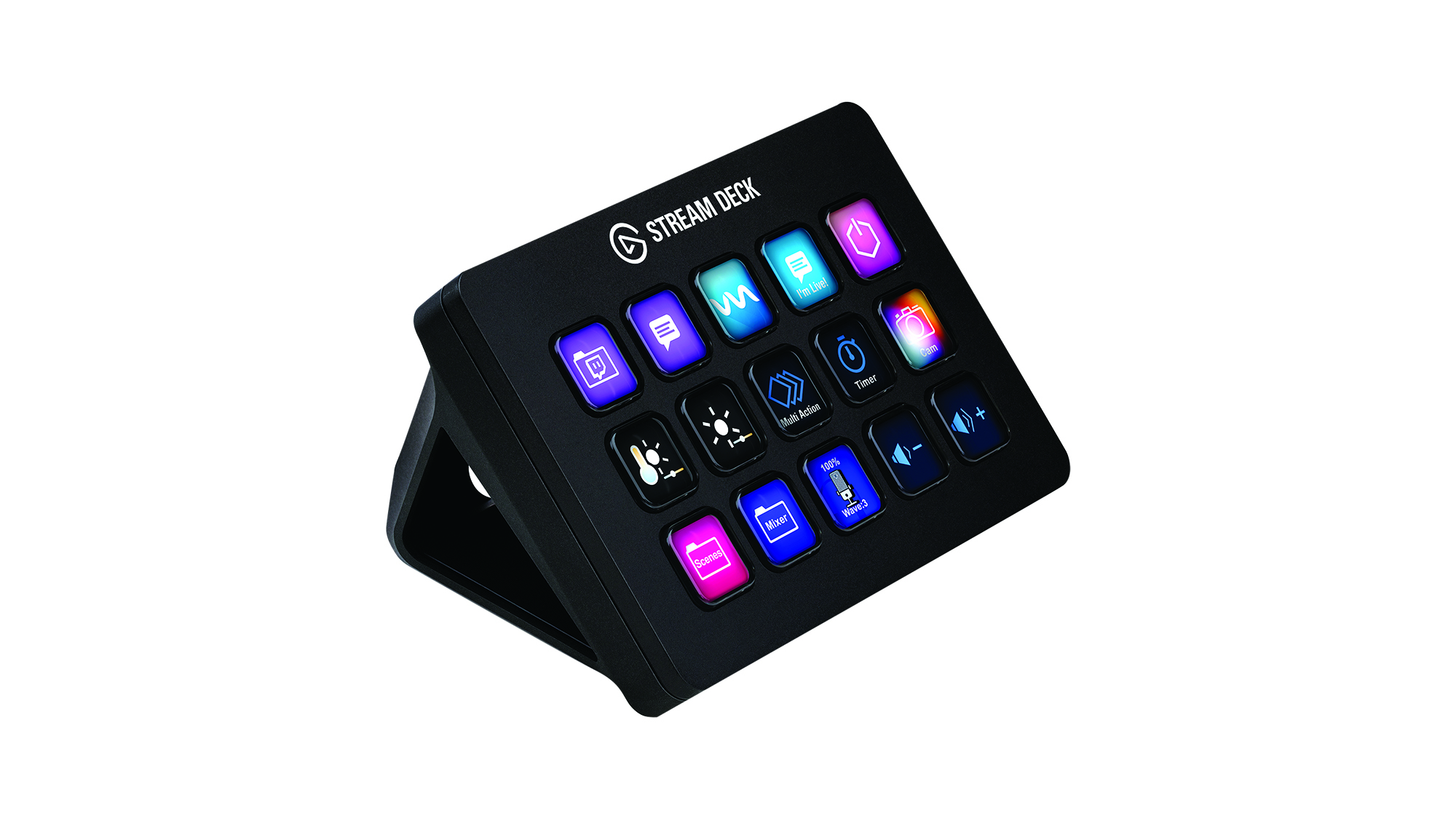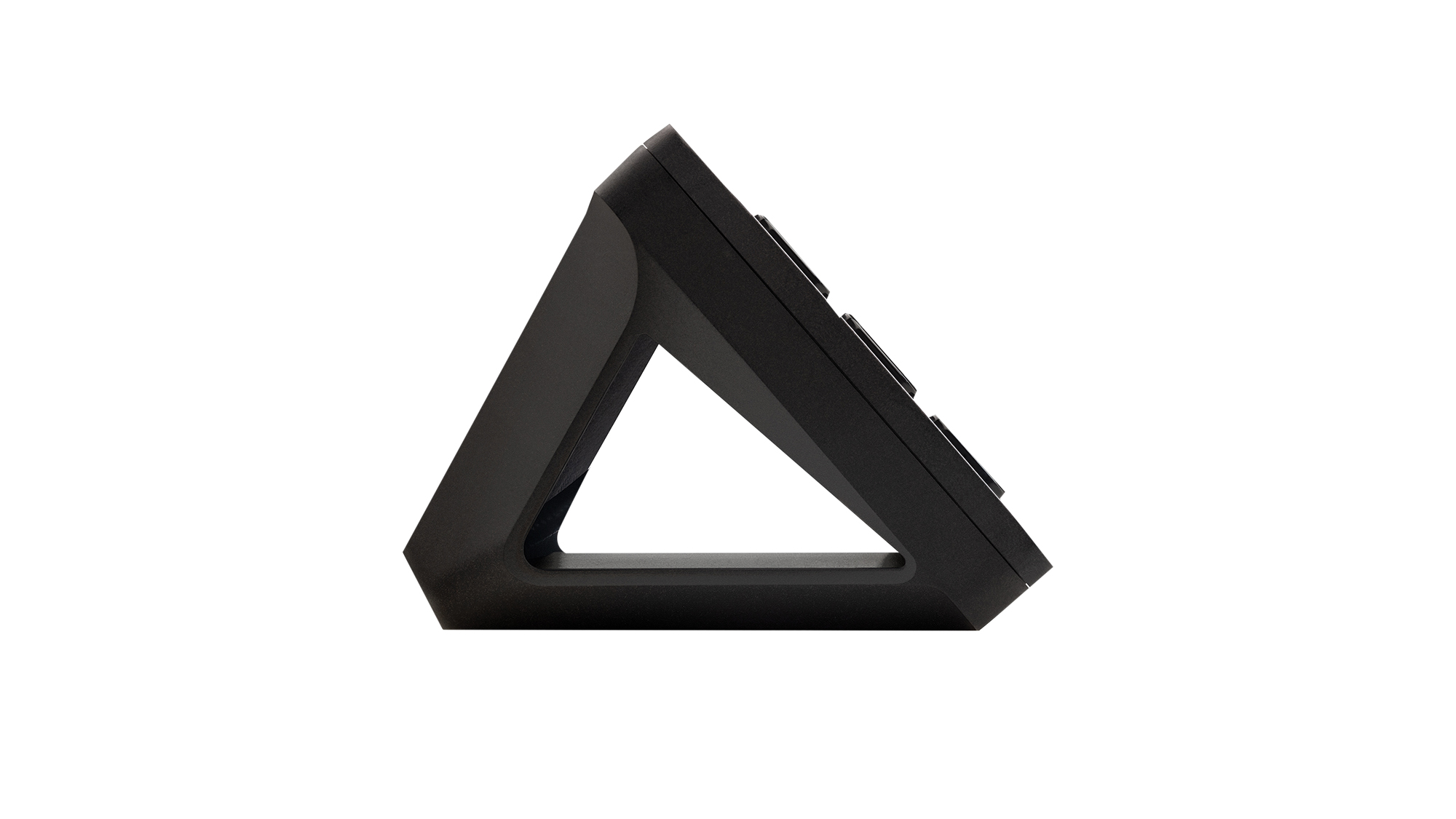Elgato Stream Deck Mk.2 review: Functionality on deck
A supremely useful set of shortcut buttons that can speed up almost any PC task


-
+
Removable USB-C cable
-
+
Sturdier stand
-
+
Extremely flexible software
-
-
Stand is non-adjustable

It’s not often that we delve into the kind of hardware targeted at Twitch streamers. The brilliance of the Stream Deck, however, is that it has many uses beyond playing a police siren sound effect to a watching audience.
The Stream Deck is a 15-button panel that can be used to control all manner of things: Windows PC or Mac, Photoshop or PowerPoint, Spotify or Slack. Anything that accepts keyboard shortcuts is basically compatible with the Elgato Stream Deck Mk.2.
This second version is a minor upgrade to the model we reviewed last year, and is now only part of a range of Stream Decks that span from the six-button Mini version right through to the 32-button XL. This 15-button panel hits the sweet spot on the price/utility axis as far as we’re concerned, although others will prefers the XL’s greater flexibility.
The Mk.2 addresses one of the key issues with the original model – its captive power cord. This one now connects to the computer via a standard USB-C cable, meaning that if the cable fails you don’t need to bin the entire device. On that note, Elgato recommends you don’t connect it via a USB hub, although we’ve never had any problems doing so.
The other big change is the design of the stand. The original had a flimsy, deckchair-like stand that offered adjustable mounting angles but could easily collapse if buttons were prodded firmly. The Mk.2 has a much sturdier but fixed-position stand. Your only option is to remove the screen from the stand entirely and lay it flat. The deck now comes in white, too, and there’s a selection of face plates if pimping your kit is your thing.

The hardware updates are modest, then, and we certainly wouldn’t recommend anyone with the first model rush out to buy this. The experience is near identical. However, if you haven’t invested before now, the new Stream Deck is definitely worth considering, as the software it runs on Includes some majorly useful functions. This includes plugins, which are basically pre-baked sets of shortcuts for specific apps.
The PowerPoint plugin, for example, includes shortcuts that make slideshow navigation easier, with presets to jump to the next, previous, first or last slide. The Stream Deck’s buttons are soft-touch, by the way, so if you’re presenting slides remotely or in person, viewers won’t hear button clicks. There are other plugins that let you control Philips Hue lights, Cubase, Discord and Spotify, to name but a few. And not all the plugins are designed to control apps: there’s one that uses a Stream Deck button to display your current CPU usage, for instance, while another places world clocks on the LCD buttons.
If you can’t find a plugin for an app or it doesn’t do what you want, you can always bake your own. The Stream Deck makes it supremely easy to program your own shortcuts. We created a set for Adobe Lightroom, which includes features with hard-to-remember keyboard shortcuts such as the clipping tool or the before/after edit comparison. You can use your own screenshots as the button icons for your homemade shortcuts or choose from the huge libraries of icons that Elgato provides. All the icons and plugins are free, too.
The other big step feature in terms of usability is pages. The Stream Deck might have only 15 buttons, but you can have an effectively infinite number of programmed buttons, because the device allows you to flick to a new set of icons on the next page. The Stream Deck also supports folders, so you can nest shortcuts for multiple apps under one button.
And that’s before we even get to the really complex stuff. The Stream Deck supports “multi-actions”, which means you can execute multiple commands with a single button press. We have a button that opens our email client, TweetDeck and web browser showing the BBC News site, for example, helping us to get started in the mornings. You can use a Stream Deck button to trigger a Mac Shortcut or a Web Hook via IFTTT, potentially allowing that single button press to set off entire chains of events on different devices.
It does all this on top of the functions that streamers might want it for, including starting/stopping streams, playing music beds or sound effects (many of which are included with the software), controlling lighting and much more.
All told, the Stream Deck is an extraordinarily flexible device for which we’re constantly finding new uses. If the £140 price proves prohibitive, you might find cheaper originals on eBay, but we’re certain you won’t regret your purchase either way.
Get the ITPro daily newsletter
Sign up today and you will receive a free copy of our Future Focus 2025 report - the leading guidance on AI, cybersecurity and other IT challenges as per 700+ senior executives
Barry Collins is an experienced IT journalist who specialises in Windows, Mac, broadband and more. He's a former editor of PC Pro magazine, and has contributed to many national newspapers, magazines and websites in a career that has spanned over 20 years. You may have seen Barry as a tech pundit on television and radio, including BBC Newsnight, the Chris Evans Show and ITN News at Ten.
-
 Cleo attack victim list grows as Hertz confirms customer data stolen – and security experts say it won't be the last
Cleo attack victim list grows as Hertz confirms customer data stolen – and security experts say it won't be the lastNews Hertz has confirmed it suffered a data breach as a result of the Cleo zero-day vulnerability in late 2024, with the car rental giant warning that customer data was stolen.
By Ross Kelly Published
-
 Women show more team spirit when it comes to cybersecurity, yet they're still missing out on opportunities
Women show more team spirit when it comes to cybersecurity, yet they're still missing out on opportunitiesNews While they're more likely to believe that responsibility should be shared, women are less likely to get the necessary training
By Emma Woollacott Published
-
 OpenAI wants developers using its new GPT-4.1 models – but how do they compare to Claude and Gemini on coding tasks?
OpenAI wants developers using its new GPT-4.1 models – but how do they compare to Claude and Gemini on coding tasks?News OpenAI says its GPT-4.1 model family offers sizable improvements for coding, but tests show competitors still outperform it in key areas.
By Ross Kelly Published